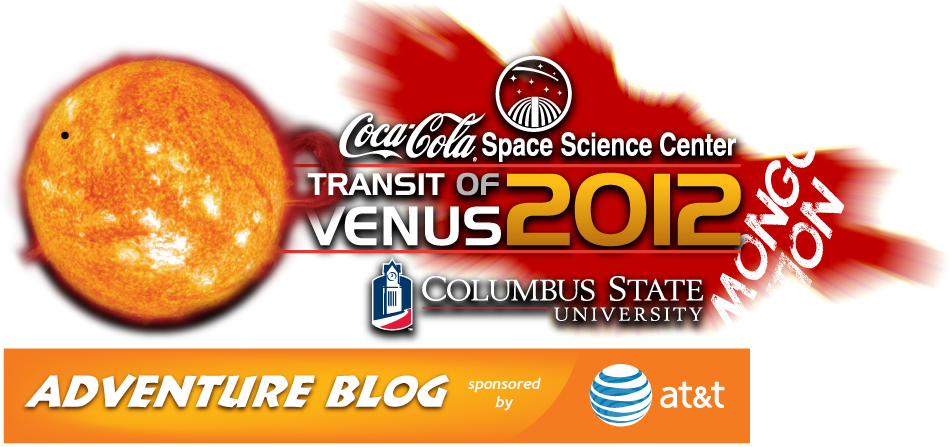Monday, June 3, 2012 (11:15
a.m. EDT)
 Our first day adventuring in
Mongolia was certainly a day full of pleasant surprises. Our morning began with a bit of nervousness
as we waited to find out whether our equipment would indeed travel with us on
the smaller plane from Ulaanbaatar to the Gobi Desert. With help from our ISSET friends, the airline
worked with us to make accommodations for the equipment, and from there, things
progressed with excitement and optimism!
Our first day adventuring in
Mongolia was certainly a day full of pleasant surprises. Our morning began with a bit of nervousness
as we waited to find out whether our equipment would indeed travel with us on
the smaller plane from Ulaanbaatar to the Gobi Desert. With help from our ISSET friends, the airline
worked with us to make accommodations for the equipment, and from there, things
progressed with excitement and optimism! The highlight of the day was our
visit to a stunning area called “Valley of the Vultures”. This place is a haven for any geologist! It was a striking contradiction of natural
features with steep harsh rock faces, lush vegetation, and a valley of ice
layers that have formed over thousands of years. In this location, ice layers have built up
each year because the winter snow never completely melts. The beautiful blue color (seen in this photos - right)
is created as the ice compresses and depletes the oxygen within the layers. We were able to observe first-hand the features
that makes this cold desert so unique.
The highlight of the day was our
visit to a stunning area called “Valley of the Vultures”. This place is a haven for any geologist! It was a striking contradiction of natural
features with steep harsh rock faces, lush vegetation, and a valley of ice
layers that have formed over thousands of years. In this location, ice layers have built up
each year because the winter snow never completely melts. The beautiful blue color (seen in this photos - right)
is created as the ice compresses and depletes the oxygen within the layers. We were able to observe first-hand the features
that makes this cold desert so unique.And, of course, what is a leadership adventure without a leadership challenge? We divided into teams and began our tasks for the week. Under the guidance of Chris Barber, Michelle Ham, and Rhodri Evans, we completed our first team building and communications exercise… on horseback. Teams elected a member who had never been around horses and coached that person through saddling and riding a Mongolian horse. Scott Norman was our representative and, as you can see, he handled this challenge like a real Indiana Jones… he even loses his hat! Go Scott – you were awesome!








